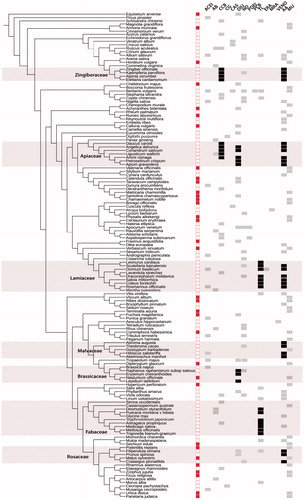Figures & data
Table 1. Plant species with cardiovascular applications based on experimental or ethnobotanical/traditional evidence.

